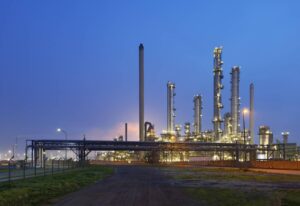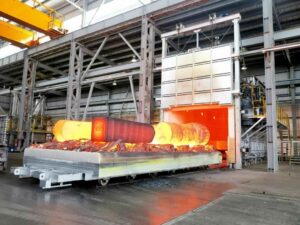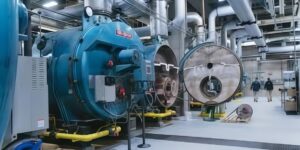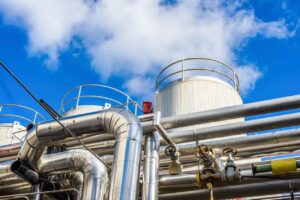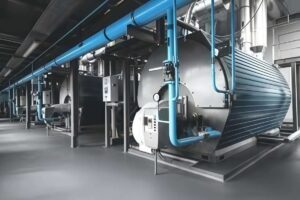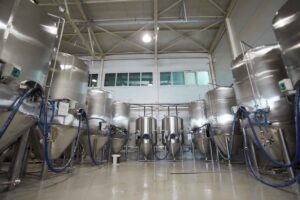Struggling to choose between UV-DOAS and infrared NDIR technology for your gas analyzer? Each has its strengths, and understanding the differences can help you make an informed decision for your specific application.
UV-DOAS and infrared NDIR are two distinct technologies commonly used in gas analyzers. UV-DOAS uses ultraviolet light for detection, while infrared NDIR relies on infrared radiation. Their key differences lie in their operational principles, applicable gases, accuracy, and cost.
Curious about which technology better suits your needs? While both methods are reliable, their performance varies based on the target gases, sensitivity, and application environment. Continue reading to explore how each technology works and its specific advantages.
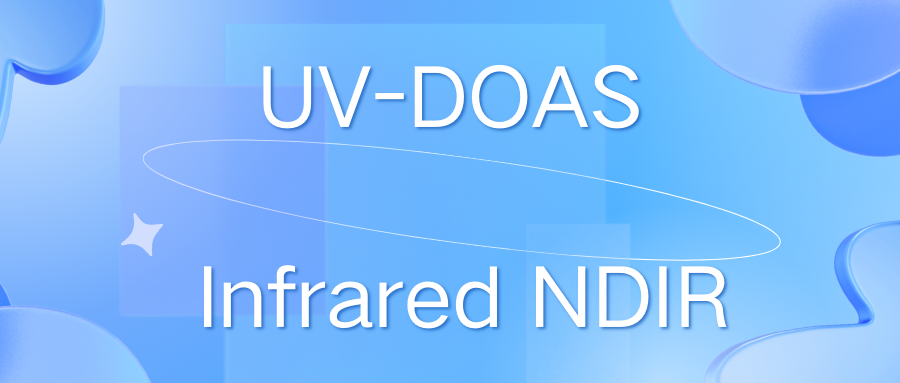
How Does UV-DOAS Technology Work?
To understand the fundamental differences between UV-DOAS and infrared NDIR, it’s essential to first look at how each technology operates. UV-DOAS (Ultraviolet Differential Optical Absorption Spectroscopy) is based on the absorption of ultraviolet (UV) light by gas molecules. When a beam of UV light passes through a gas sample, certain gas molecules absorb light at specific wavelengths. This absorption is directly related to the concentration of the gas in the sample.
The key principle behind UV-DOAS is that it can simultaneously detect multiple gases by measuring their absorption spectra. The technique excels at measuring gases like sulfur dioxide (SO₂), nitrogen dioxide (NO₂), ozone (O₃), and other volatile organic compounds (VOCs) that have strong absorption characteristics in the UV range.
- Advantages: UV-DOAS is known for its high sensitivity and accuracy, especially for gases that absorb UV light. It can differentiate between gases that have overlapping absorption in other spectrums (such as the infrared spectrum), making it particularly effective in complex mixtures.
- Limitations: The technology requires a stable light source and precise calibration to maintain accuracy, and it is more suitable for gases with strong UV absorption.
UV-GAS-100M UV-DOAS Gas Sensor
UV-GAS-100M UV-DOAS Gas Sensor is an independently self-developed flue gas analysis product that is suitable for online gas analysis of environmental protection and industrial control sites. Based on Ultraviolet Absorption Spectroscopy and Differential Optical Absorption Spectroscopy, it adopts an optical technology platform and can conduct online analysis and measurement for gases including SO2, NO, NO2, H2S, Cl2 NH3, etc. Under normal conditions, it is used to measure gas components of SO2, NOX, and other gas components that can be extended. One module can simultaneously carry out measurements for 5 gas components at maximum. The product owns features of high measurement accuracy and reliability, fast response, and wide application.

How Does Infrared NDIR Technology Work?
Infrared NDIR (Non-Dispersive Infrared) technology, on the other hand, is based on the absorption of infrared (IR) radiation by gas molecules. Similar to UV-DOAS, when infrared light passes through a gas sample, certain gases absorb light at specific wavelengths in the infrared spectrum. NDIR technology measures the reduction in the intensity of the IR light that reaches a detector after passing through the gas.
The core advantage of NDIR technology lies in its ability to detect gases like carbon dioxide (CO₂), methane (CH₄), carbon monoxide (CO), and other hydrocarbons, which absorb strongly in the infrared range.
- Advantages: NDIR analyzers are known for their robustness and simplicity. They can operate in harsh environments and require minimal maintenance. NDIR is highly effective for detecting gases with strong IR absorption, especially for common industrial applications like monitoring carbon dioxide levels.
- Limitations: The technology can struggle to differentiate between gases that absorb at similar IR wavelengths, which may lead to interference in certain applications. Additionally, its sensitivity is generally lower than that of UV-DOAS for gases with weak IR absorption.
IR-GAS-600 series gas analyzer

IR-GAS-600 series gas analyzer is an infrared gas analyzer independently developed by our company for environmental monitoring and industrial site emission gas analysis. The analyzer mainly measures CO, CO2, CH4, N2O, and O2 gas concentrations, and has the characteristics of high measurement accuracy, high stability and reliability, and fast response time.
IR-GAS-600 This model high-stability infrared detectors for simultaneously measuring CO, CO2, and CH4. H2 always reads correctly, independent of the background gas composition. An optional non-depleting paramagnetic sensor can be used to conduct O2 analysis. All sensors/detectors are temperature-controlled or temperature-compensated for maximum analytical stability.
Both types of analyzers are available with analysis of:
- Carbon Monoxide (CO) via infrared detector
- Carbon Dioxide (CO2) via infrared detector
- Oxygen (O2) via electrochemical sensor or optional paramagnetic
- Methane (CH4) via infrared detector
☑ Measure COppm+CO2+CH4ppm+N2Oppm in the one unit
☑ Measure CO%+CO%+CO2%+CH4%+CnHm% in the one unit
What Are the Main Application Differences Between UV-DOAS and NDIR?
UV-DOAS excels in the following applications:
- Environmental monitoring: It is beneficial for measuring pollutants like SO₂, NO₂, and ozone in the atmosphere, where high accuracy is required to comply with environmental regulations.
- Industrial emissions monitoring: UV-DOAS is effective in measuring multiple gases simultaneously, which is essential in industries like power generation, waste incineration, and petrochemicals where several pollutants may be present.
- Research and laboratory settings: Due to its ability to detect trace levels of multiple gases, UV-DOAS is often used in scientific research for atmospheric studies and other gas-related investigations.
Infrared NDIR is preferred for:
- Carbon dioxide monitoring: One of the most common uses of NDIR is in CO₂ detection, such as in HVAC systems, greenhouses, and fermentation processes.
- Methane detection: NDIR is often used in the oil and gas industry for methane leak detection, given its high sensitivity to hydrocarbons.
- Indoor air quality monitoring: Many commercial air quality monitors utilize NDIR technology to detect carbon dioxide and other common gases that affect indoor air quality.
The decision between these two technologies often comes down to the specific gas being monitored and the accuracy required. If your application involves gases with strong UV absorption, UV-DOAS is likely the better option. For more straightforward gas detection, particularly for hydrocarbons and CO₂, NDIR may be the most cost-effective choice.
How Do UV-DOAS and NDIR Compare in Terms of Accuracy and Gas Detection?
Accuracy is a critical factor when selecting a gas analysis technology. UV-DOAS generally offers higher accuracy for gases that absorb UV light. Its ability to detect and differentiate multiple gases simultaneously makes it a superior choice for applications where precision is paramount. For example, in environmental monitoring, where small concentrations of pollutants must be detected, UV-DOAS can provide more reliable results than NDIR.
On the other hand, NDIR provides excellent accuracy for specific gases like CO₂ and CH₄ but may be less precise when analyzing gas mixtures with overlapping IR absorption spectra. This limitation means that NDIR is more suited to applications where a single target gas is dominant, or where cross-sensitivity between gases is not a significant concern.
- UV-DOAS Pros: High accuracy, multi-gas detection, better for gases with UV absorption
- NDIR Pros: Good accuracy for hydrocarbons and CO₂, cost-effective for single-gas detection
What Are the Cost and Maintenance Considerations for UV-DOAS and NDIR?
Another important distinction between UV-DOAS and NDIR technologies is the cost and maintenance associated with each.
UV-DOAS:
- Generally more expensive due to the complexity of the system and the need for precise calibration.
- Requires regular maintenance to ensure that the light source and detection system remain stable over time.
- Calibration is critical to maintain accuracy, particularly when measuring low concentrations of gases.
NDIR:
- Often more affordable, especially for single-gas detection, because of its simpler design.
- Requires less maintenance compared to UV-DOAS, making it a popular choice in industrial settings where reliability and low operating costs are priorities.
- While calibration is necessary, NDIR systems typically require fewer adjustments over time, which reduces the overall cost of ownership.
In summary, UV-DOAS tends to have higher upfront costs and more demanding maintenance but offers superior accuracy for complex gas detection. NDIR, while simpler and less expensive, provides solid performance for specific gases like CO₂ and methane, with lower maintenance needs.
Here’s the table comparing UV-DOAS and Infrared NDIR technologies:
| Feature | UV-DOAS (Ultraviolet Differential Optical Absorption Spectroscopy) | Infrared NDIR (Non-Dispersive Infrared) |
| Operating Principle | Uses the absorption of specific UV light wavelengths by gas molecules to detect the concentration of multiple gases | Uses the absorption of specific infrared light wavelengths by gas molecules to detect one or a few gases |
| Types of Gases Detected | Suitable for detecting SO₂, NO₂, O₃, and VOCs with strong UV absorption characteristics | Suitable for detecting CO₂, CH₄, CO, and other gases with strong infrared absorption |
| Application Scenarios | Environmental monitoring, industrial emissions monitoring, multi-gas detection, and research | CO₂ monitoring, methane detection, indoor air quality monitoring, and industrial gas leak detection |
| Accuracy | High precision, ideal for detecting complex gas mixtures | High accuracy for single-gas detection, but lower precision for gas mixtures |
| Multi-gas Detection Capability | Can detect multiple gases simultaneously, especially those with overlapping infrared absorption spectra | Can detect multiple gases simultaneously |
| Cost | Higher cost, more complex system, requires precise calibration | Lower cost, simpler design, suited for single-gas detection |
| Maintenance Requirements | Requires regular calibration and maintenance to ensure light source stability | Low maintenance, reliable in long-term use |
| Typical Applications | Environmental protection, industrial emissions monitoring, gas detection in research fields | Greenhouse gas monitoring, HVAC systems, industrial gas leak detection |
Conclusion
Both UV-DOAS and infrared NDIR are valuable technologies in gas analyzers, each with its strengths and weaknesses. UV-DOAS is ideal for applications requiring high accuracy and the detection of multiple gases, especially those that absorb ultraviolet light. In contrast, NDIR is more suitable for cost-effective, single-gas detection, particularly for gases that absorb in the infrared spectrum, like CO₂ and methane.
The choice between UV-DOAS and NDIR depends on the specific gases being analyzed, the required accuracy, and the operational environment. By understanding the core differences, you can choose the technology that best fits your gas monitoring needs.more information pls visit: Gas Analyzer Manufacturer | Gas Analysis System | Esegas






